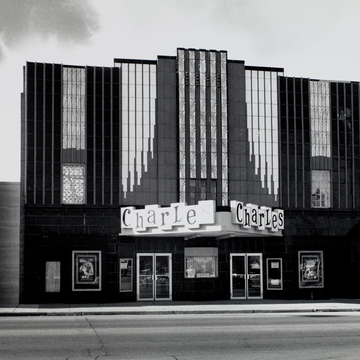The Moderne style—in the form of its early Art Deco image—continued to be used through much of the 1930s. On occasion it was updated by architects who employed materials and colors associated with the Moderne's second phase, the Streamline Moderne. This is the case with the Charles Theatre, which is nothing more than a facade treatment—but what a treatment. The background of the building is shimmering glazed black tile. Against this background is a series of vertical designs and patterns in brilliant gold, blues, and rust-colored glazed terracotta. The high point of the design is the facade's central panel over the marquee. This is composed in the fashion of an ascending group of organ pipes. This theater is unquestionably one of the major Art Deco monuments in the state.
You are here
Charles Theatre
If SAH Archipedia has been useful to you, please consider supporting it.
SAH Archipedia tells the story of the United States through its buildings, landscapes, and cities. This freely available resource empowers the public with authoritative knowledge that deepens their understanding and appreciation of the built environment. But the Society of Architectural Historians, which created SAH Archipedia with University of Virginia Press, needs your support to maintain the high-caliber research, writing, photography, cartography, editing, design, and programming that make SAH Archipedia a trusted online resource available to all who value the history of place, heritage tourism, and learning.










